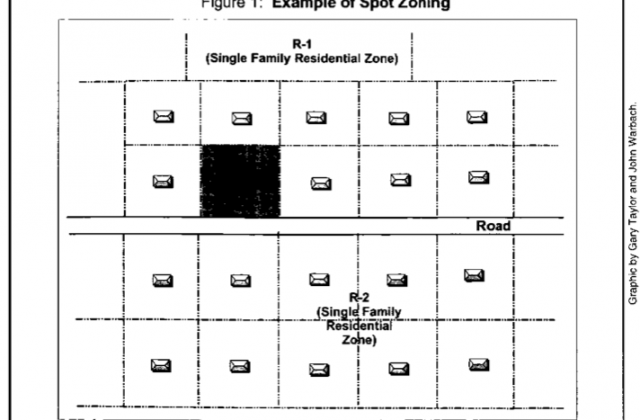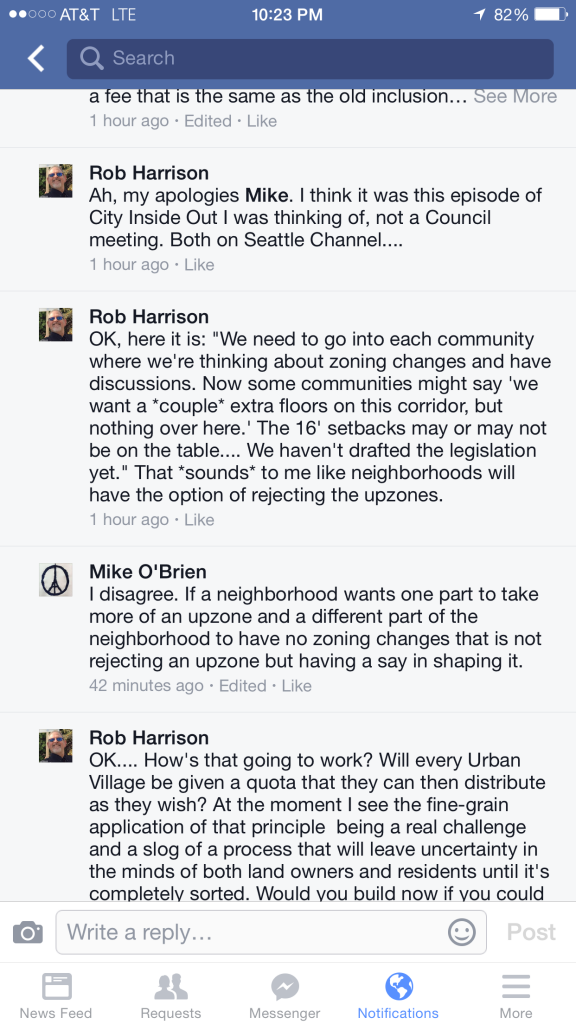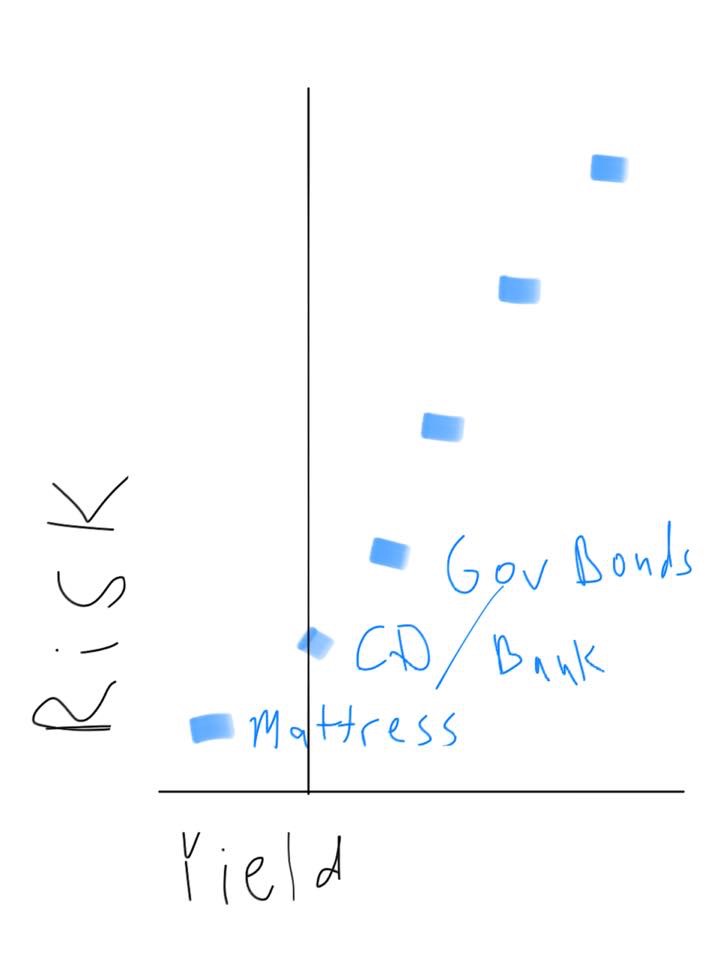Grand Bargain: 10 Questions for the Mayor and City Council (and City Attorney)
December 14, 2015
Dear Mayor Murray and Members of the City Council,
In the days and weeks since the announcement of the Grand Bargain, concerns and uncertainty have grown among people who build housing and mixed-use development outside of Downtown and South Lake Union about how mandatory upzones associated with the Bargain will be implemented.
Far from clarifying implementation, the City seems to be introducing more uncertainty into the discussion. Recently Councilmember O’Brien said on the Seattle Channel that,
We need to go into each community where we’re thinking about zoning changes and have discussions. Now some communities might say ‘we want a couple extra floors on this corridor, but nothing over here.’ The 16′ setbacks [passed in low-rise legislation] may or may not be on the table. We haven’t drafted the legislation yet.
In a press release the Displacement Coalition announced that Pete Holmes, the City Attorney, “expressed his strong interest” in what the Coalition calls a, “displacement risk analysis” of proposed upzones associated with the Bargain.
Other Councilmembers and City staff has variously expressed the idea that neighborhoods will be able to influence the nature and location of upzones through a process that would happen in each and every neighborhood all across the city.
Is each of these true? Is there any effort to review these comments in light of what was supposed to be a deal, signed by the participants and binding to those parties?
A proposal that was hailed as a bargain has become an imbroglio, with varying opinions about what the upzones are, mean, where they are, and how they will be implemented.
Let me also add, unequivocally, our skepticism of the underlying economics and legality of a proposal that, based on our preliminary analysis, will not generate enough value in increased zoning to even offset construction costs and rent restrictions part of the Bargain, a clear violation of most interpretations of State law for mandatory inclusionary housing programs.
Additionally, no builders of housing outside Downtown or South Lake Union, the ones not incidentally expected to produce 6000 units, signed the Framework document that underlies the Grand Bargain. Still, if such a scheme can work and allow the financing of new construction, we’re willing to work on that proposal. While City staff has made promises to meet and work with us on feasibility issues, that promise has yet to be fulfilled.
Finally, we embrace the notion of consensus and compromise. But if the stated problem being addressed by the HALA effort and the Grand Bargain was housing price, we have yet to see any metric established for determining how these interventions (regardless of our skepticism) would reduce overall housing prices, the very worry that inspired the creation of the Housing Affordability and Livability Agenda Committee.
Therefore we ask that City staff meet with our representatives to discuss feasibility as soon as possible, and we urge City leaders to reconvene and address the following questions before moving forward with any legislation or legislative process, including SEPA review or drafting of legislation for zoning changes or new inclusion requirements.
- Are the proposed rezones to be implemented “zone-wide” and as stated in the final framework document?
- If rezones will not be broad legislative rezones consistent with the City’s Comprehensive Plan, how does the City plan to process quasi-judicial contract rezones to reach the stated goal of 6000 units in 10 years? How will the City avoid spot zoning to implement Bargain upzones?
- Has any third party economic analysis been completed to determine where and how rezones would produce the most housing for the value of proposed rezones? If not, what are the plans for completing that review?
- On what data was the City’s goal of 6000 units based? Can we please see that data?
- If a third party review indicates that economic value is not created by proposed upzones when costs for construction and lost rent revenue are considered, what is the City’s plan to proceed.
- What City department will be responsible for drafting legislation?
- Is there any precedent in other City’s for this kind of broad mandate for performance across multiple zones? Have those programs reduced overall housing prices?
- What performance measures are in place to fairly and objectively measure meeting the City’s goals?
- Will the mandatory inclusion requirement remain in place after the City’s goals are met (e.g. if the 6000 goal was met sooner than 10 years)? Why or why not? What are the provisions for adjusting the goals based on changes in the housing market over 10 years?
- Why has the City not consulted the regions experts in local housing markets to seek their advice on the future of Seattle’s housing market overt the next decade? Will the City consult those experts to help resolve these questions?
We understand these questions and seem nettlesome and, in the words of some, driven only by the pursuit of profits. That isn’t true. Our people build housing because it is their calling, like yours is to elected office. Certainly those proposals can make that calling easier or more difficult, less or more expensive, but they will build because it is what they believe in and do; it is their vocation. And people moving to our region will continue to need housing. You can make meeting that demand easier and in so doing reduce costs, prices, and increase housing opportunity for everyone who wants to live in Seattle.
In closing, it is often asked, “what is the development community prepared to do to solve the housing crisis?” That answer is simple: build more housing!
Yes, there are people and families in our community that can’t afford rent each month and we should find solutions and fairly extracted subsidies for those families. Nobody in our community should live without a home or fear losing the home they have.
Instead, everyone, from a young entrepreneur fresh from the sale of her first company to a poor family finding its way to our city on their last tank of gas, should be able to find a place to live in our city. That would be truly a grand bargain if we could do that. But imposition of infeasible, punitive, and confusing policies won’t get us there. Please work with us as avidly as with neighborhoods to implement or find effective alternatives to the Bargain.
Sincerely,
Roger Valdez
Director
Out Damned Spot! Will O’Brien’s Upzoning Proposal Work?
Last week I saw the latest movie version of Shakespeare’s play Macbeth, maybe my favorite of his plays. It was just OK, and if you really want the best film version watch Roman Polanski’s version (don’t forget Kurosawa’s brilliant adaptation). The play, like all things Shakespeare is about many things, but the plot centers on the tragic consequences of political ambition and overreach. In the play there’s a famous moment when Lady Macbeth says, “out damned spot!” When I heard this I couldn’t help but be reminded of Councilmember Mike O’Brien’s recent efforts on the Seattle Channel and Facebook to rewrite the Grand Bargain to do what I called spot zoning, a selective rezone of various parcels rather than the “zone-wide” rezones in the Bargain. What is spot zoning and will it work in Seattle?
First of all, as one article puts it, spot zoning is “one of the most frequently advanced, yet generally misunderstood concepts of zoning and planning law.” I’ll admit, I used the term the way I’ve often heard NIMBYs use it, as a blanket term referring to a rezone that would be illegal because it picks and chooses parcels rather than whole sections of the city.
My own experience as Council staff and generally has taught me that the Seattle City Council won’t pick a parcel and rezone it by legislation. If they do, two things have to happen, there has to be public benefit and the rezone has to be broadly construed; the language in the legislation has to apply to general categories of parcels not an address.
One other option is a contract rezone, a rezone that applies to one parcel but that is conditioned on public benefit, and upon the Council acting in a quasi-judicial fashion. The Appearance of Fairness Doctrine—the Municipal Research and Service Center (MRSC) has a great summary—means that when land use changes that affect a specific parcel should “involve fact-finding and the application of general policy to a discrete situation.” When acting in their quasi-judicial role, the Council can’t be lobbied about the rezone; they must act as impartially as possible. The MRSC summary points out that, “the doctrine attempts to make sure that all parties to an argument receive equal treatment.”
Since generally speaking an upzone changes the value of a property, it has been seen by the courts and policy makers as something prone to abuse. The worst example of spot zoning is the classic one of a campaign contributor giving lots of money to a candidate in exchange for upzoing his property. But conferring value to a property doesn’t have to be so brazen. The point has been to avoid subjective rezones that favor some owners over others and that don’t support broader land use policy.
Legally what does a spot zone look like? How do the courts and lawyers advising the Council and policy makers determine what is spot zoning? Here, again from the MRSC summary:
The reasons for invalidating a rezone as an illegal spot zone usually include one or more of the following: (1) the rezone primarily serves a private interest, (2) the rezone is inconsistent with a comprehensive plan or the surrounding territory, or (3) the rezone constitutes arbitrary and capricious action. Each situation must be determined on its own facts and it is not always easy to determine conclusively whether a rezone would constitute an illegal spot zone.
So is what Councilmember O’Brien is proposing, “3 floors here, 2 floors there, and none over there” spot zoning? The answer is going to depend on whether the City Council decides to act on upzones for the Grand Bargain in one of the ways they can legally upzone, through “zone-wide” upzones that are legislative or contract rezones which are parcel specific and require quasi-judicial review. Either way, the changes have to match the Comprehensive Plan, including that plans land use map, which must be amended with every zoning change to align with plan. Anything else looks like spot zoning to me.
I’ve seen the strained efforts to craft legislation to hit the target of one parcel using legislation. It sometimes doesn’t work. Remember Strippergate? Probably not, but it was an effort to change parking requirements for one parcel in Lake City through legislation. It failed (I go through a more extended discussion of all this at the old Seattle’s Land Use Code blog) and cost some Councilmember’s their jobs. The Council, once scotch’d by scandal, usually learns its lesson. Here’s what Councilmember Steinbrueck said the time when the legislation was repealed:
I believe our precious covenant of trust with the public has been broken. We will take this vote today to rescind the Lake City rezone legislation and wipe the slate clean
It’s painful to imagine legislation to create some extra floors and height over here and over there and none over there, especially when engaging neighbors all over town who don’t want any upzones, period. Contract rezones? Practically speaking, with thousands of parcels in the city, this would turn the Council into a full time quasi-judicial review board and reviews of contract rezones; just one of them, can take years. And, by the way, the entire Comprehensive Plan is up for revision; how do Grand Bargain rezones line up with that process? Will some of that have to be done over?
Lady Macbeth in her fevered sleep walk asks, “What need we fear who knows it, when none can call our power to account?” Councilmember O’Brien’s efforts to please neighbors with endless process and upzones “over here but not over there,” smacks of politics pure and simple, something that the Appearance of Fairness Doctrine simply won’t allow. The alternative is time consuming process, process, and more process. Either way, it’s hard to see how Councilmember O’Brien and his colleagues can sneak by block-by-block upzones even if they claim the beneficiary is the public because of the housing the Grand Bargain is intended to create. Upzoning here and there, legally, and within the next year, is a problem that is “beyond my practice.” I’m not sure anyone can figure it out.
"That’s Not What I Said:"O’Brien Reframes Bargain on Facebook
I usually don’t post on Fridays since traffic tends to fall off as people get ready for the weekend. But an interesting exchange took place on Facebook last night. When asked a direct question about proposed rezones in the Grand Bargain–an exchange of upzones for mandatory inclusion of rent restricted housing in new buildings–Councilmember O’Brien appeared to be changing the framework agreed upon earlier this year. A friend, City Builder Rob Harrison, asked a question about something he’d heard O’Brien say about rezones. Harrison thought he’d heard O’Brien say that neighbors could negotiate the rezone to be done in some places in a zone (i.e. LR, NC, MR) and not others.
Here’s the exchange.
Yep, that’s me in there. And it is true, O’Brien more or less said exactly what Harrison said at 22:35 on our Seattle Channel panel discussion on the Grand Bargain.
Harrison found this exact moment on the program and pointed this out, quoting what O’Brien said.
I think O’Brien has blocked me on Facebook so I am not sure if he saw what I posted next, the section of the Grand Bargain Final Framework that clearly outlines the fact that rezones would be “zone-wide” rezones. So along with exposing the bargain to what Harrison calls “a slog of a process” what O’Brien is suggesting goes against the letter of the Bargain. He seems to be unilaterally reframing the whole Bargain, suggesting that neighborhoods have a say in where upzones will happen and where they won’t.
So to sum up, O’Brien was asked whether he had publicly said that rezones would include two stories here, one story there, and no stories over there. He denied he ever said that. But then, when confronted with the evidence that he had in fact said this in public, he proceeded to say that doing exactly what he denied saying was what he really thinks should be done, which is essentially spot zoning, something considered, generally, to be illegal. To O’Brien “no zoning changes” is like “having a say in shaping it.” What? Will this work with the IRS? Can “not paying taxes” be like “having a say in how much I pay?”
Aside from the slithery double speak in O’Brien’s saying he didn’t say something, then trying to say that no zoning changes is like shaping a zoning change, the comment is in direct conflict with section 2G of the Grand Bargain’s framework document which he signed. I thought maybe O’Brien’s busy work trying to redistribute wealth in Seattle maybe made him forget the section and the document and maybe even that he signed it. So I posted a picture of that too.
A wise source told me a while back that the question isn’t whether the Grand Bargain will unravel, but who does the unraveling. What O’Brien already appears to be doing is pulling the thread, promising that neighborhoods will have a say where upzones happen, while also saying he never said that at all, but also suggesting that upzones don’t mean that upzones will happen everywhere in spite of having signed a document saying that they will. Maybe, like David spared Saul, O’Brien will relent and give the neighborhoods the bad news, upzones will happen zone-wide, and he’ll spare the Bargain a death by process. Or maybe he’ll he look for a reward from the neighborhood and kill the bargain on the neighborhoods’ behalf. Maybe he doesn’t know himself.
Where’s the Profit in That?
So I am in a wrestling match. Right now I am trying to figure out how to explain in the simplest terms–what are often called layman’s terms–how real estate transactions work. Here’s the biggest problem: real estate professionals speak one language and lay people (a term borrowed from the division between the priesthood and everyone else) speak another. And the priest lay analogy is a good one. Intuitively I understand Realestatese. But I can’t speak it very well. I also know how lay people understand real estate development. We need to translate between the two. Why? Because most lay people who care, are going to need to understand why the Grand Bargain won’t work. Let me explain the problem.
So on the one hand, real estate transactions function with some basic three-letter acronyms like NOI, DCR and other terms like Cap rates. The problem is that all these make perfect sense if you have a sense for real estate. For example, anyone in the real estate world knows that Net Operating Income (NOI) isn’t the same as what many of us would consider “take home pay.” That is, NOI is all the money left over after a project pays its bills but before it pays debt service. So, NOI isn’t what anyone could really call “profit” because NOI is money that is obligated to cover the banks requirements for cash flow. Think of it, in lay mans terms, as collateral or what the bank expects you to earn after you pay your mortgage.
For lay people, those of us who don’t do real estate for a living, NOI is profit. It makes sense. You spend money to build something, after you cover those costs everything after that is profit or “gravy” as some might say. Intuitively, I sense that people see earthmovers, cranes, tractors, and lots of construction workers and they guess that there is a lot of money in development. Developers have lots of cash that they use to buy all this. They’re rich. After they build their apartment buildings, they sit back, decide how much they’ll charge for rent, and, as one local NIMBY was fond of saying, “laugh all the way to the bank!”
But as I explained in a post at Seattle Transit Blog, that simply isn’t how it works. And I explained NOI in another post here. I believe that one of the things that drives so much bad policy in Seattle is the misunderstanding of how real estate development works. Do people make money at it? Sure people make money at building housing. But people also make money driving buses, teaching kindergarten, and flying airplanes. And like most small business, development (and most are smaller scale businesses) can pay well or it can go bust, like that great restaurant around the corner that inexplicably shut down.
Real estate development does generate returns—relatively modest but consistent returns for investors and banks that put money into building housing. But real estate isn’t gambling. I tried, unsuccessfully, to express this in a chart. There are high risk, high yield propositions like robbing a bank and low risk, low yield propositions like a certificate of deposit or putting your money in a mattress. Matt Gangemi, who is much smarter than me, took my goofy graph and made this one.
In the end, real estate development is a relatively medium risk, medium yield business with banks and investors usually supplying the money and demanding lots of control, certainty, and pay back in exchange for their cash. Sure, some people earn millions in “take home pay.” But like the restaurant business (probably higher risk and higher yield), there are few Tom Douglas’ and lots of people running that small restaurant around the corner.
The reason I am sharing this is first because I want to let you in on our process: we’re trying to explain to people who care about housing why the Bargain doesn’t work. Second, I think the idea that building housing is like a casino with people betting it all on a high risk condo project and making lots of cash by stacking the deck just isn’t real. Lastly, I am looking for a translator, a person who knows the business but who can break it down in a way that makes it clear that building housing isn’t a sure thing as a business. It’s risky. And builders sometimes win and sometimes lose, just like the rest of us. But we have to make that believable with math and show our work.
Tower Separation Anxiety: Design Review Edition
You’ll remember several weeks ago how strident I became when I found out that Councilmember Sally Bagshaw was proposing a tower spacing scheme downtown that would make building more housing in that neighborhood more difficult. Tower spacing is a regulation that prevents the construction of multiple high-rise towers on the same block supposedly to preserve light and air for people walking on the sidewalk. This scheme also protects views, something very important to the wealthy people living in the Escala building who hired former Councilmember Peter Steinbrueck (who was land use chair when current tower building rules were passed) as their lobbyist and who Councilmember Bagshaw calls her “expert” on the issue. Councilmember Bagshaw also raised several thousand dollars at the ritzy Escala building before making her proposal.
Well, one of the projects, Altitude Hotel and Residences, attracting so much attention from the Escala and their Councilmember is going through design review. The last couple meetings have attracted a mob of Escala residents who hectored and lectured the board throughout the meeting. Hopefully the board will do the right thing and move the project forward quickly. We sent in this letter of support yesterday. One thing I didn’t point out is that under the proposed Grand Bargain, Councilmember Bagshaw’s proposal would rob local housing non-profits of significant subsidies since fewer projects would pay mandatory fees proposed under the bargain. Yet one more reason we hope the Mayor will ignore her letter asking for tower spacing.
————————————
December 2, 2015
To Members of the Downtown Design Review Board,
Smart Growth Seattle is a non-profit organization that supports more housing supply, choice, and opportunity in all neighborhoods in Seattle. We support project #3108037, the Altitude Hotel & Residences.
Recently the City, including the Mayor and City Council, declared a housing affordability crisis, convened stakeholders, and proposed a set of recommendations specifically designed to increase the supply of housing at all levels of affordability throughout the city. While the Altitude project will not offer affordable housing as defined by the City’s process, the additional units mean more choice for people who otherwise would compete for existing lower priced housing.
This project will provide 230 units of housing where currently there is none, will widen the sidewalk in places from 11’ to 18,’ create multiple new food and beverage spaces, and offer 12 artist work lofts all within the existing zoning conditions, using a contextually appropriate design.
The Altitude is a thoughtfully designed building that is pulled away from other existing neighbors on the block. And not only that, their architects have proposed a design that a will attract and retain great eateries while creating a spacious thoroughfare for pedestrians.
You’re hearing from wealthy neighbors at the Escala who are worried about their views. That’s understandable. However, this city needs more housing, and the value of that need exceeds the value of meeting the demands of existing neighbors to build nothing. These residents are using the design review process to thwart new development that will provide benefits to the wider community through additional tax revenue, street activation, and, most importantly, additional housing options to help Seattle accommodate growth downtown.
Please move quickly to approve the Altitude project so that construction can begin as soon as possible.
Thank you,
Roger Valdez,
Director
Smart Growth Seattle










